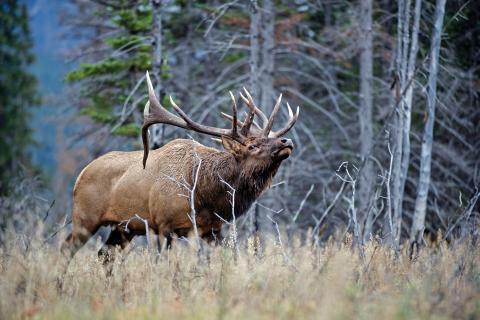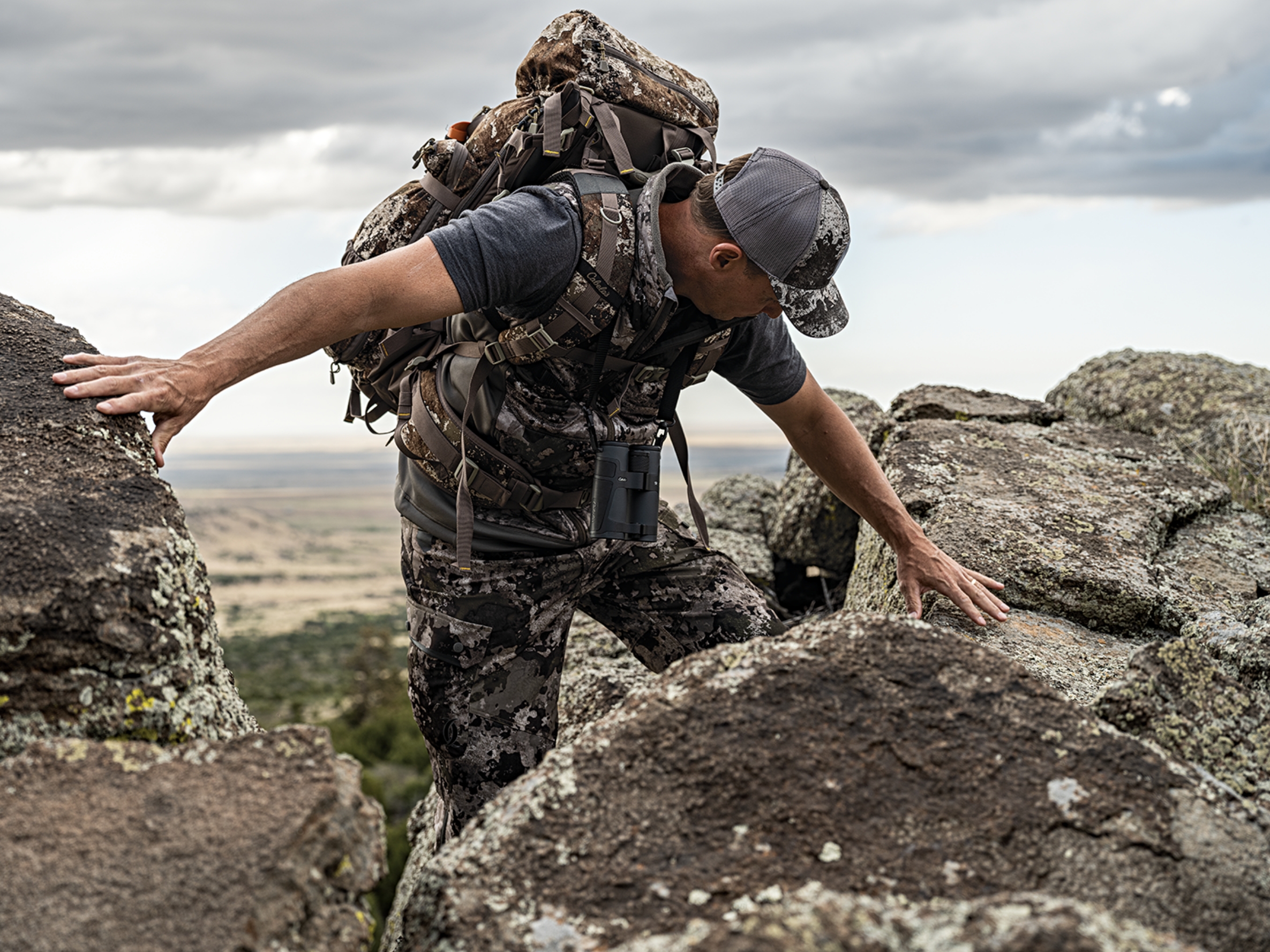
That is the question. For me, the answer is simple: silence is golden.
by Fred Eichler
Forget about what you read in Shakespeare’s Hamlet. The real question when you’re bowhunting for elk should be to call, or not to call. For me, the answer is simple: silence is golden.
Whether hunting for myself or guiding, I like elk that aren’t on edge. I also prefer to be unseen, unheard and unsmelled. The problem with calling is that I’m heard, often spotted and frequently winded. It doesn’t matter if I use a cow mew or a bugle. One sound is all it takes to put every elk within earshot on high alert.
Let’s assume we are all amazing callers and that any nearby elk will be convinced we’re another elk. They will still be alert and on the lookout for the elk that made that sound.
When you blow a cow call, most bulls approach with caution, unsure if another rival bull is nearby. Most of us are well acquainted with suspicious bulls that come in downwind. Those bulls are on edge because they may have to fight or flee at a moment’s notice. Bulls also commonly circle to scent check to see if a cow is in estrus and ready to breed, and for dominant bulls they know by scent from summer bachelor herds.

I’ve watched bulls in national parks that receive zero hunting pressure do the exact same thing many times when they come in to a calling cow: they circle downwind to scent check the cow and sift the air currents for other bulls. If they can’t see the cow that is calling, it’s almost guaranteed that they’ll get downwind. As bowhunters, we are usually calling from a concealed location and unless we’re using a cow elk decoy, the elk can’t see any elk, so they are all the more apt to circle.
I think of it this way: since it would be extremely rare to have a lone cow elk just walking through the woods calling during the fall, elk usually assume vocalizing individuals are part of a herd. That causes them to be in a heightened state of awareness when they hear a call, especially during the rut.
I’m convinced it’s this increased wariness that makes killing an elk so difficult after calling. I've tracked my own statistics for years and found out that on average I had to call in 10 bulls to bow range to get a shot at one. My guides also experience similar rates of success. Colton Heward, who guides on the 220,000-acre Deseret Ranch in northern Utah, reports similar numbers. He says he calls in eight bulls for every one successfully killed with a bow. That’s on one of the most trophy-rich, least pressured elk hunting areas I have ever seen.
I’ve kept pretty thorough records of our hunting successes and failures over the past 30 years of guiding bowhunters for elk. When our hunters sit beside a waterhole, wallow or active trail, or stalk elk we’ve spotted from afar, and if we do no calling, they harvest seven out of 10 elk targeted.
I often tell clients “Would you prefer a 10 percent chance to harvest an elk, or a 70 percent chance?" Of course, a zillion variables come into play. Do bulls come into calls and offer high-odds killing shots? Absolutely. And some of them are full-grown bruisers. So much of elk hunting comes down to being in the right place at the right time. But if you play the odds, over time, shooting at calm, unalert elk will significantly increase your odds of eating elk steak every year.
It takes a near-perfect situation when calling elk for a bowhunter not to be seen drawing their bow, winded by a circling bull or heard while adjusting their position. When a bowhunter controls the narrative by choosing the ambush location, the odds increase.
I’m not saying this to keep anyone from calling elk. Having a hot bull come into your calls is one of the most electrifying experiences imaginable. My reason for sharing this is simply to help bowhunters have more success and make more clean kills, and that often involves leaving your call in your pocket.
- 4042 views

